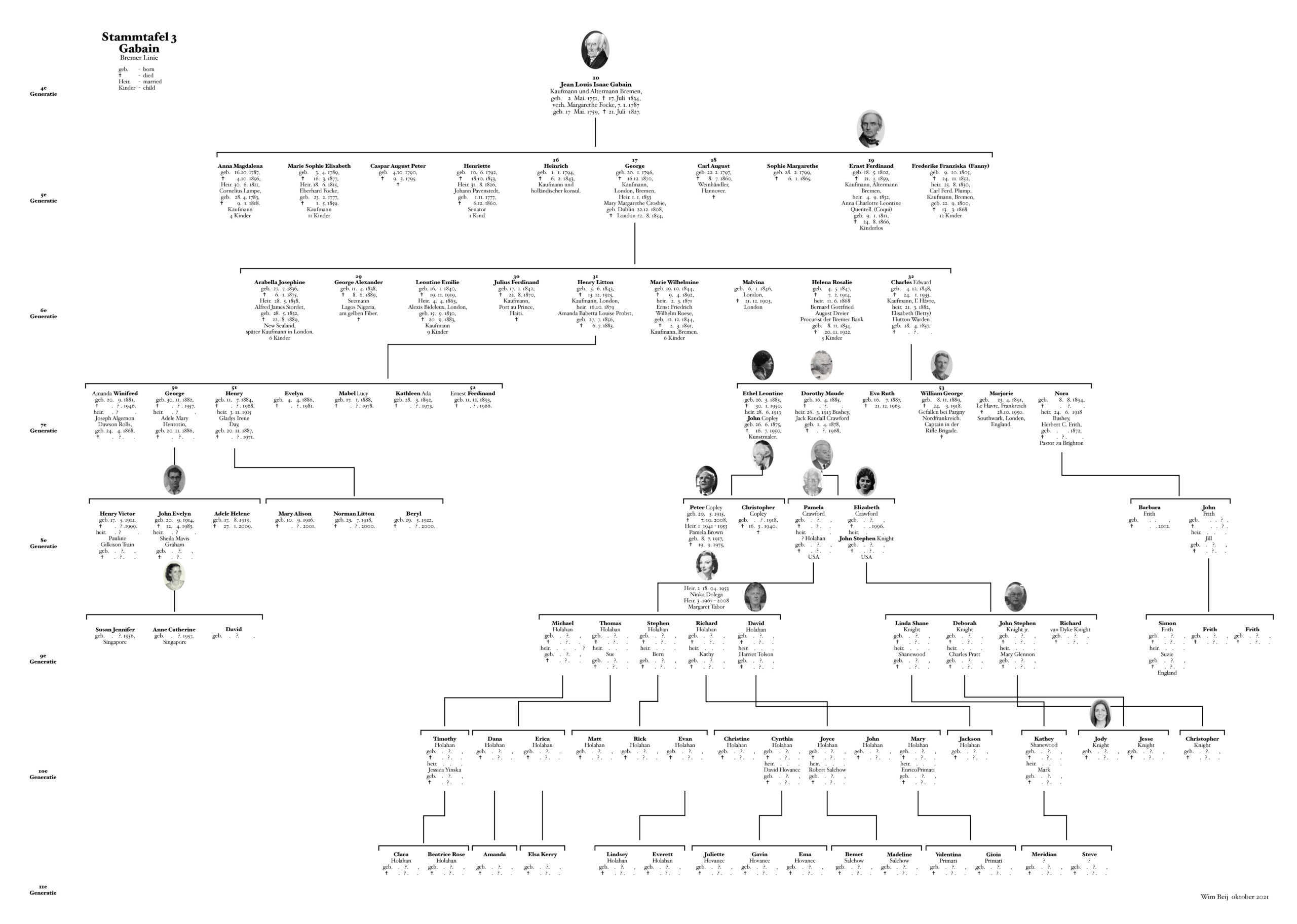
Ethel Gabain en John Copley

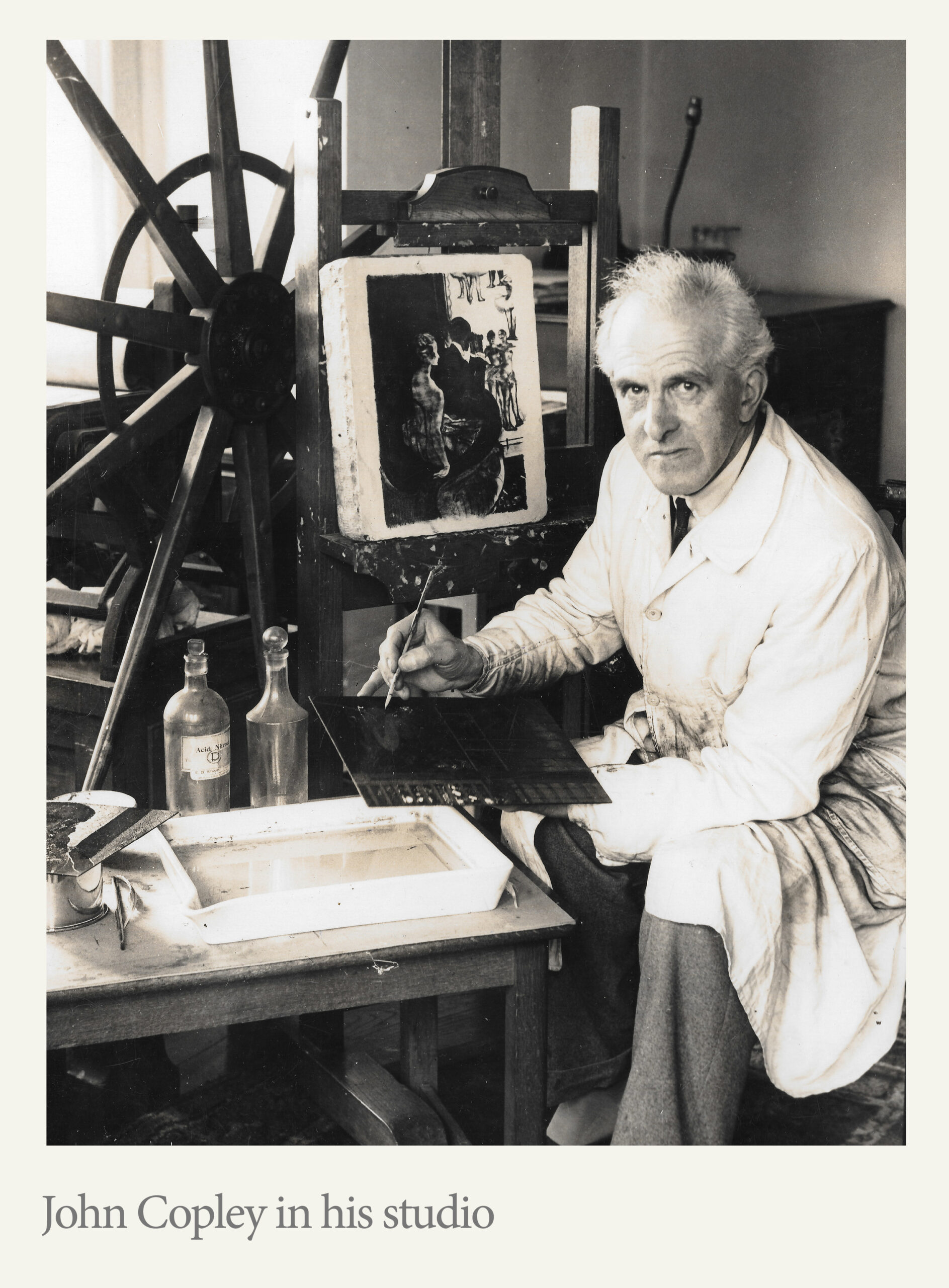
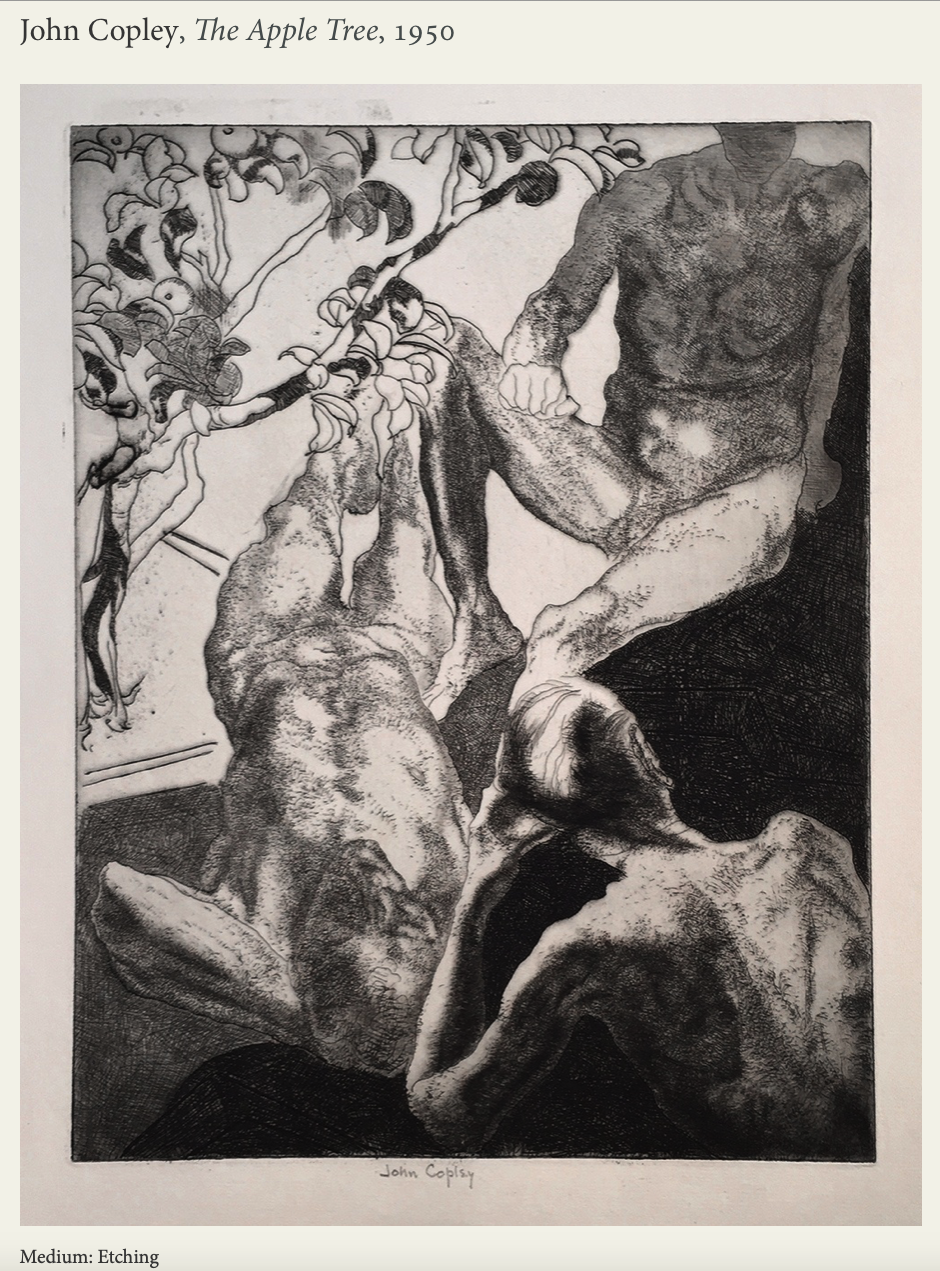
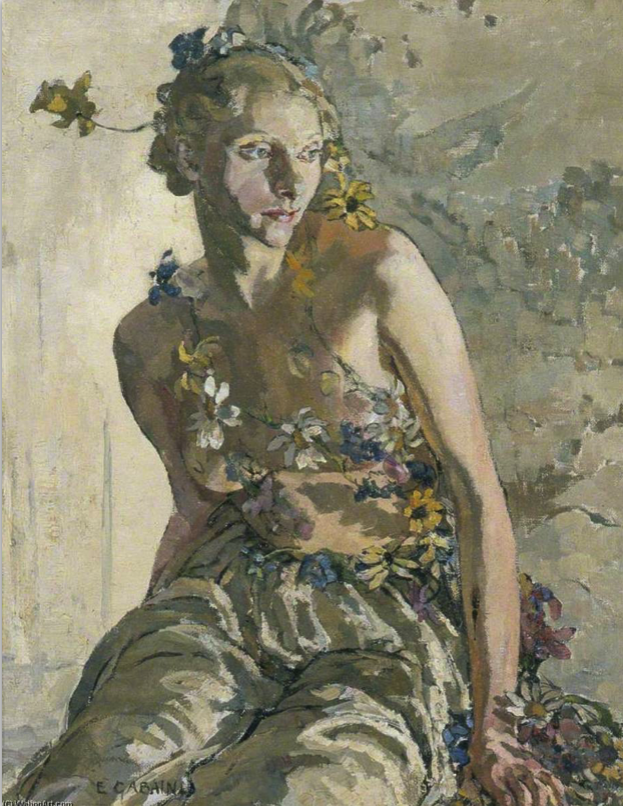
John Copley and Ethel Gabain married in 1913. The Senefelder Club, the union of which both were members, brought together two of the most original and prolific British artists of the twentieth century. Both were devoted to printmaking, each producing a considerable amount of work of great inventiveness and consistency. Later in life, both started painting. The market for prints gradually disappeared, eventually collapsing entirely. John Copley was elected President of the Royal Society of British Artists, Ethel Gabain was named Official War Artist. Both displayed energy and adaptability, during the period when their work saw its last bloom. The vision of both was completely different from each other, despite the proximity in which they worked. There is a certain ’emotional charge’ running through the themes of their works; Ethel Gabain sympathetic and direct, John Copley somewhat aloof, as a perceptive observer.
Ethel Gabain’s maintained close identification with the concerns, feelings and dreams of young women throughout her working life. It is therefore difficult to avoid an autobiographical reading of some of her subjects. Her perceptive and sympathetic demeanour combines effectively with her skilful drawings, which were later used to describe the work of women in World War II. According to her son’s account, she was determined and courageous, never quite resolving the conflict between her sense of decency and her adventurous nature. She had a successful career, and her great prowess was equally recognised by her dealers, her contemporary artists and the War Artists Committee. Although she did etchings and paintings, it was her love of lithography, which she discovered early on, that defined her personality as an artist.
John Copley produced a considerable body of work, both as a lithographer and as an etcher. His artistic themes were broad and his technique was expressive. An atmosphere of detachment defines his work. He is ‘the observer’ of life and notices its strangeness even within the ordinary. Theatres, restaurants, sports arenas, concert halls and the streets of the city, gave him themes that he conveys in an idiosyncratic, sometimes peculiar way. ‘Action’ inspired him, and he studied the movement, gesture and identity of those he observed. Emotion penetrates his later etchings and a personal element is clearly present. Ultimately however, their vision remains their own. Copley’s detachment from, and Gabain’s involvement with, the subject forms stark contrast. Her portraits show the awareness of the inner being in a direct, descriptive style. The people in his works provoke expressive and dynamic compositions in him. As artists who have expressed themselves primarily as printmakers, their work is rarely seen in public. But since their deaths in 1950, and the period of neglect of their work that followed, it has gained a new following and is now celebrated at exhibitions in London and elsewhere.
Source: www.copleygabain.com
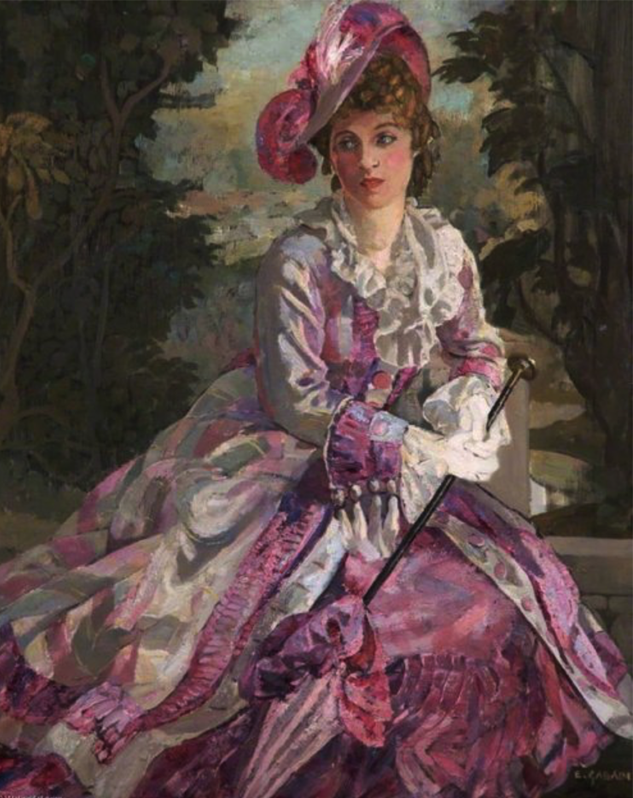
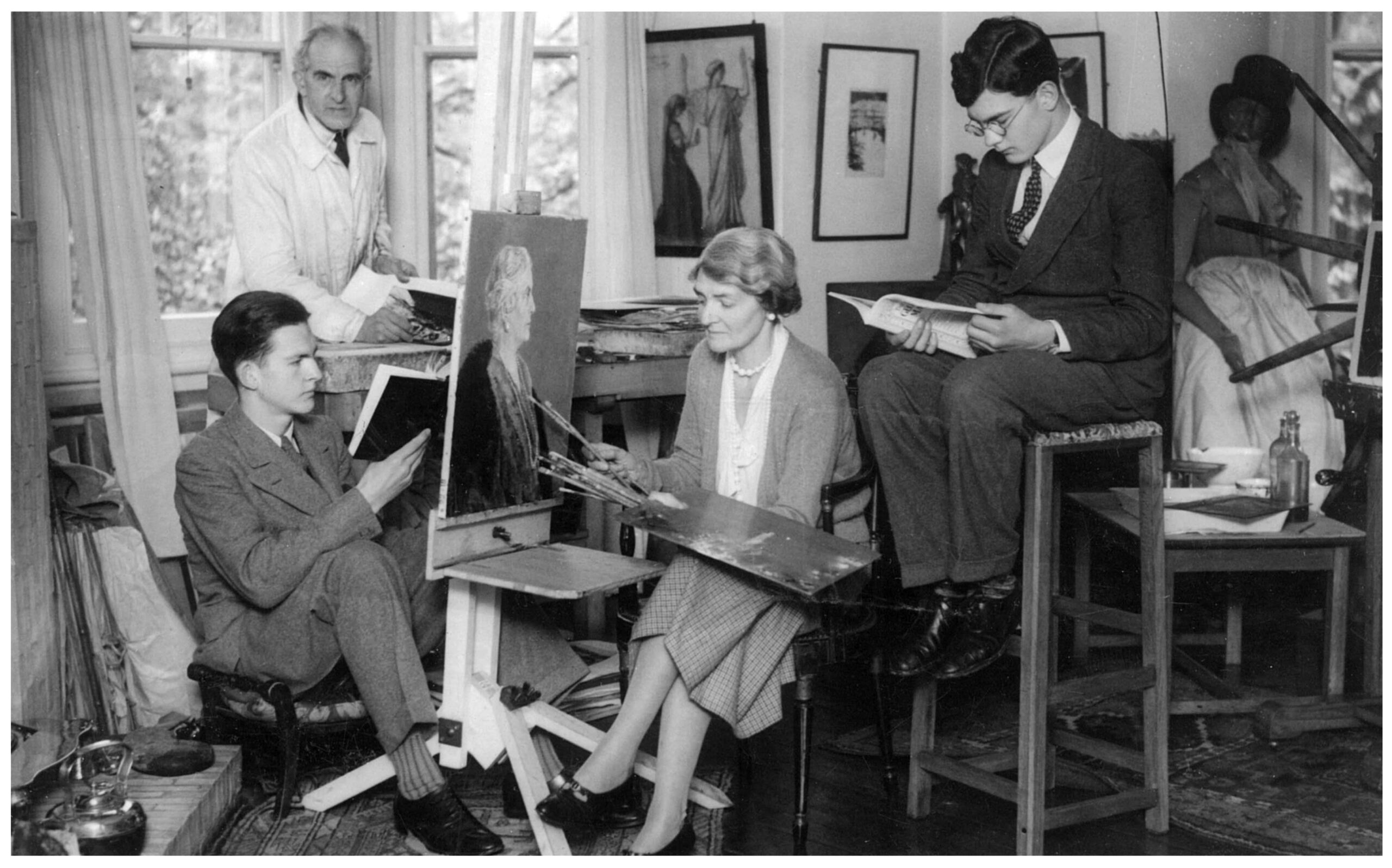
William George Gabain
The only son of Charles Edward Gabain, born in Le Havre (France) in 1889. His father was a wealthy French coffee importer, who after his retirement moved to England with his family, to The Manor House, Bushey in Hertfordshire. William George had five sisters (Ethel, Dorothy, Eva, Marjorie and Nora) and the family became influential in Bushey, where his father was chairman of the Bushey Urban District Council for most of World War I, serving as JP and churchwarden. Ethel Léontine Gabain became a well-known artist. Her parents organised charity events at the Manor House, and a concert in support of the French Red Cross at Bentley Priory.
William George was educated at Sandroyd and Charterhouse, where he was an apprentice. He was a member of the football team for two years and also won the public school boxing championships at Aldershot in various weight classes. As a student, he graduated from Pembroke College, Cambridge, with a degree in the classics and won the Oxford boxing championship three times. He later took a temporary mastership at Eton, and in September 1913 he was given a permanent position at his former school. On February 9th 1914 he was commissioned to serve in the Charterhouse School Contingent, Junior Division, Officers’ Training Corps.
When World War I broke out, he was a Rugeley in the Charterhouse OTC camp, of which he was also an officer. He got his call at 10 a.m., an hour and a half later he was on his way to France. His knowledge of French and German earned him a post as an expedition rider with the First Cavalry Brigade, and he stayed in France from August 1914 to early 1915. He made his retreat from Mons, his work is mentioned in the dispatches. From January 1915 he served with the Intelligence Corps, in which he is mentioned again in the broadcasts. In May 1916 he joined the staff of the headquarters of the 10th Corps, but four months later he was sent home with a serious leg wound. In January he was back in France, as temporary captain at headquarters. He was awarded the Military Cross for gallantry in June 1917, but was dissatisfied with life within the headquarters staff and applied several times for a combat role. In January 1918 he was transferred to the 2nd Rifle Brigade and was one of the fatalities from the German attack on March 24th 1918. His aide wrote: ‘He was last seen on the morning of Palm Sunday, in a sunken road, holding on with a handful of men practically surrounded by larger numbers of enemies. During the previous power he did a fine job of holding the bridge under the most trying conditions and in the face of overwhelming numbers of Germans. Captain William Gabain was reported missing, and it took a year for his family to finally accept that he had died. He was 28 years old during this time. His parents subsequently left Bushey and moved to ‘Sunnyfields’, Mill Hill, North London.
William George Gabain is commemorated with honor in the British Cemetery of Pargny-on-Somme and on the Bushey Memorial and in St James’ Church, Bushey. He wrote several letters in 1914, which were published in the Watford Observer and are included in Janet Murphy’s ‘Bushey during the First World War’, published by the Bushey Museum.


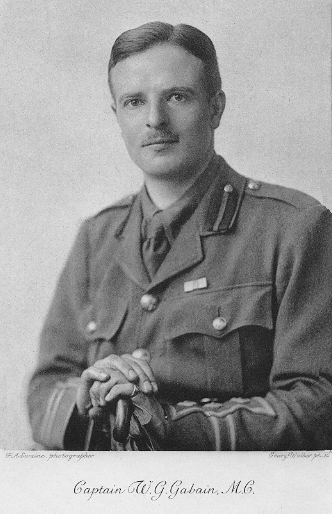
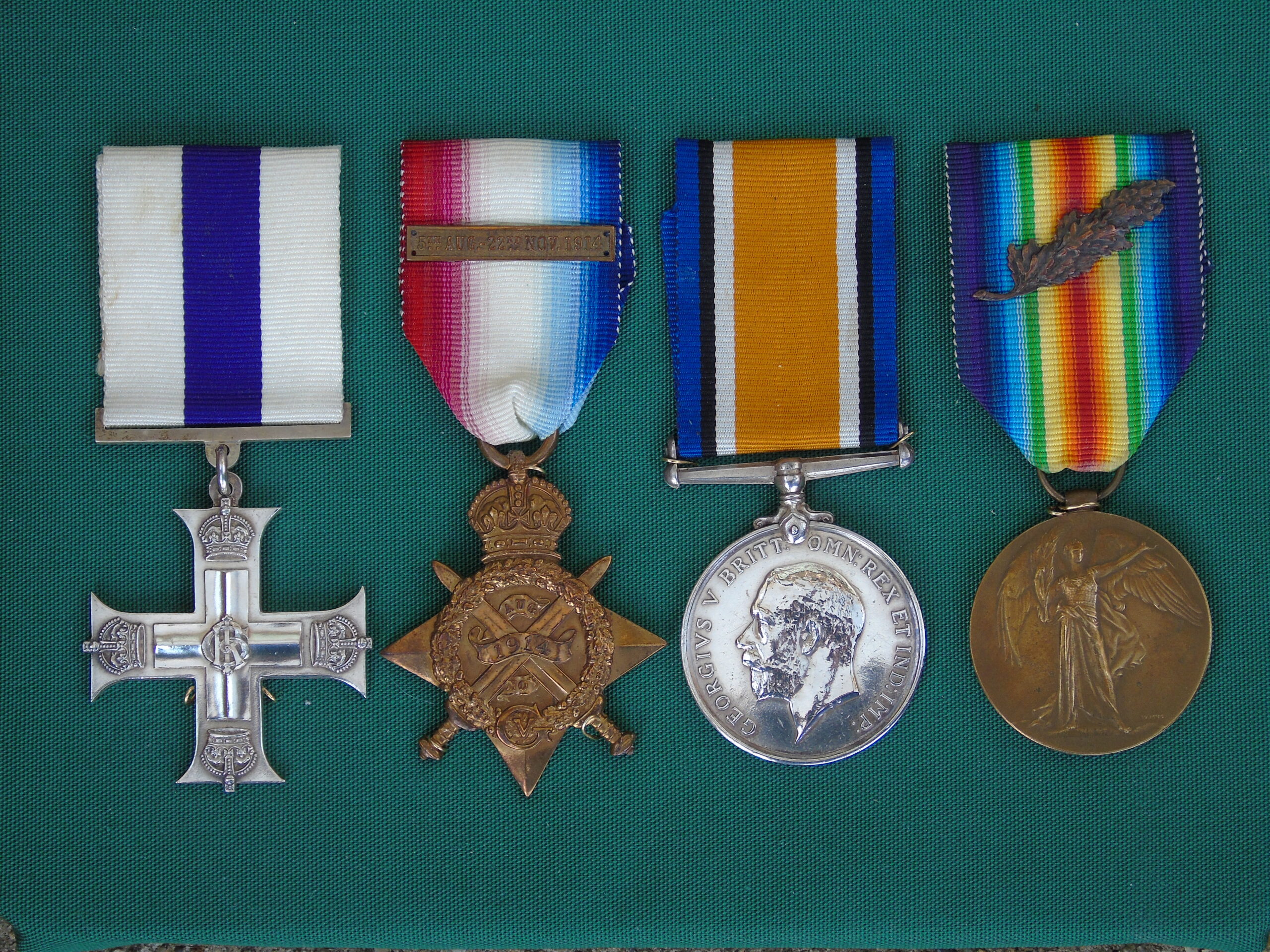
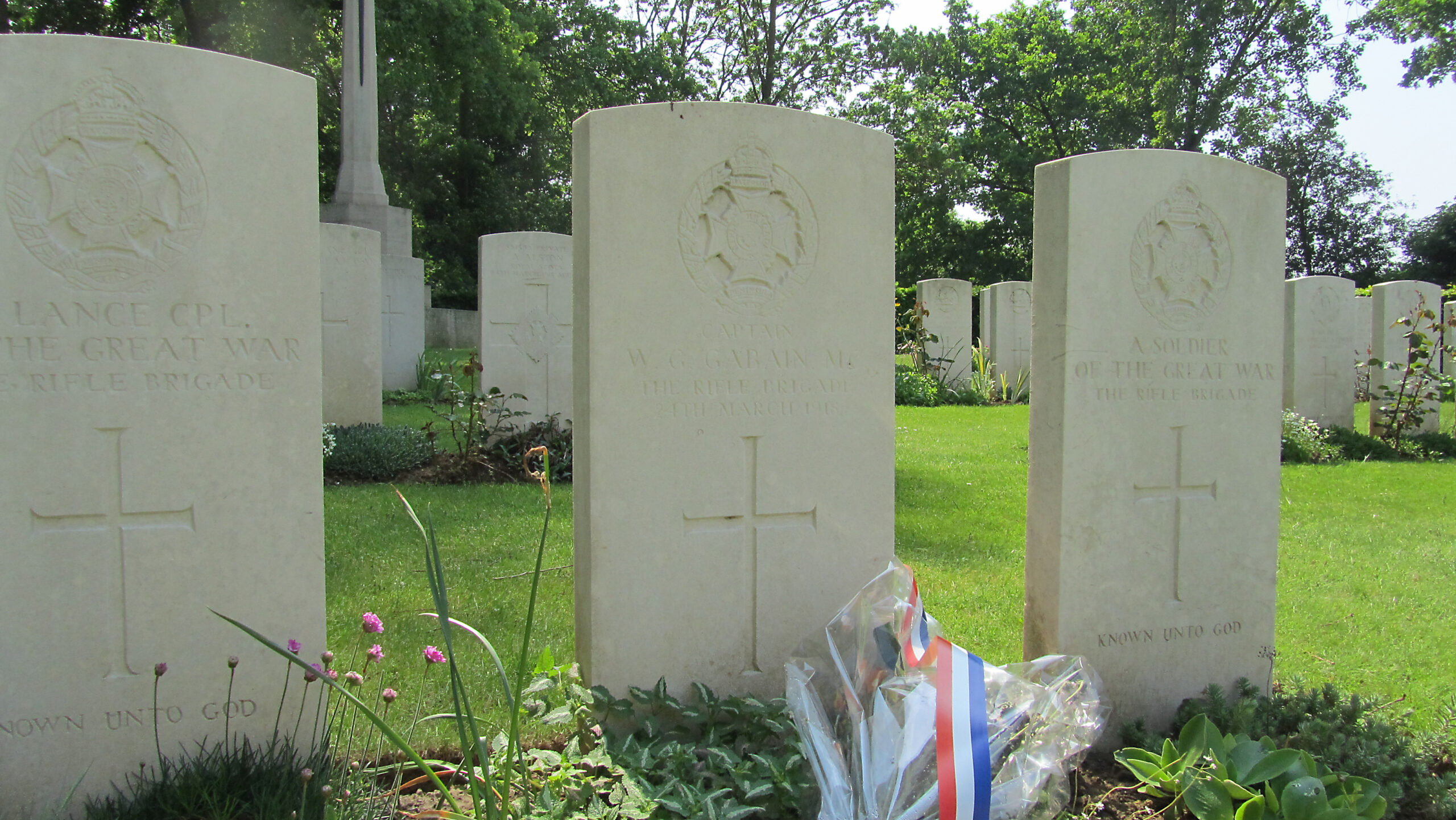
Book: Captain William George Gabain M.C.: British Military Intelligence Corps: The Great War 1914 to 1918 – by Stephen Knight, grandson of Dorothy Gabain and cousin of William George Gabain. Available via Amazon.
